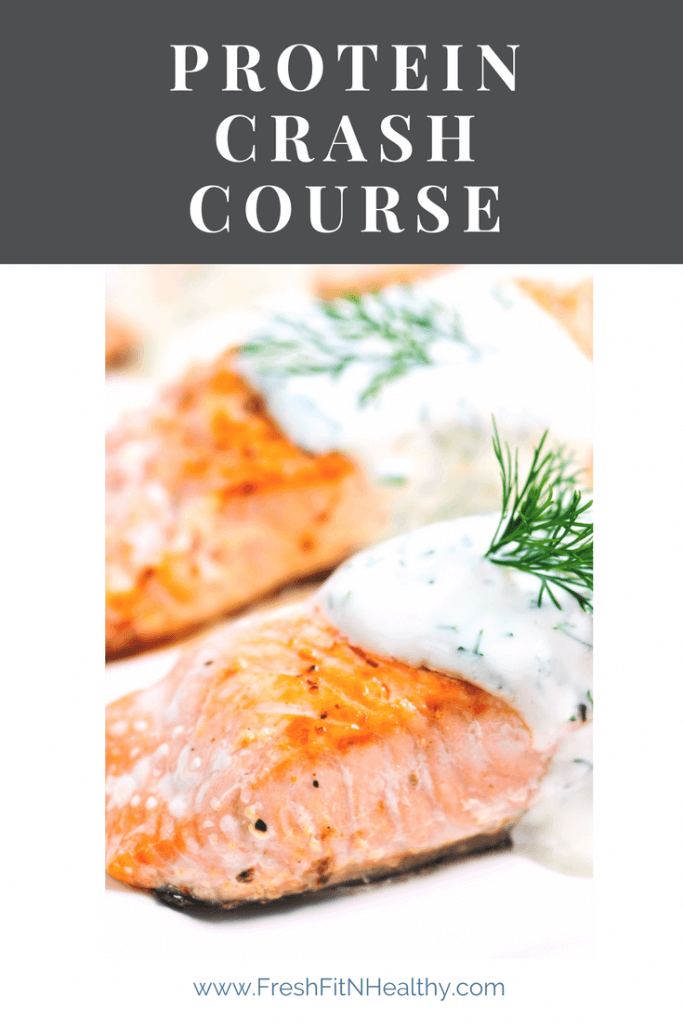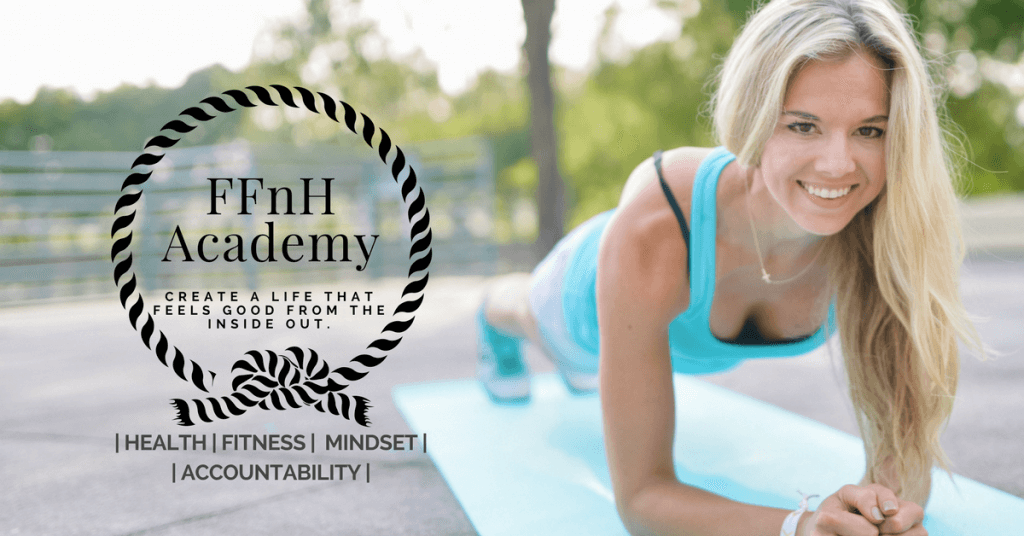One of the biggest things I see clients and people around me not getting enough of: PROTEIN! Here’s a protein crash course on what exactly it is, why you need it, and some good ways to get enough in!
Protein:
I am sure that you have heard it all before—drink the protein shake instead of breakfast, eat a protein bar for “weight loss,” bulk up with protein…yada, yada, yada. You hear it from friends, family, and especially from the media, but is any of it true? Does science back it up?
Welcome to the second part of our macronutrient crash course. (First part was on carbs!) In this section we will dive right in and get to the nitty gritty about protein!

What is Protein:
Scientifically, proteins are organic compounds composed of amino acids. There are many different amino acids—such as lysine, valine, and tryptophan—that combine together to form proteins. When people think of protein they normally think of something like chicken of some form of meat product. What most don’t realize is that all foods, including spinach, contain amino acids…i.e. all foods do contain proteins! So yes, even someone on a totally plant based diet does get protein.
There is one catch. Since there are many different amino acids, twenty to be exact, in order to be considered a COMPLETE PROTEIN, a food must contain nine essential amino acids.
Essential Amino Acids
We all know what essential means. It is something that is necessary, needed; something without which someone—or something—would fail if it does not have it. Essential amino acids are necessary for your survival… BUT your body is unable to make these amino acids. Therefore, in order to get your essential amino acids, you must get them from outside sources i.e. from food.
There are nine essential amino acids:
- Histidine
- Isoleucine
- Leucine
- Lysine
- Methionine
- Phenylalanine
- Threonine
- Tryptophan
- Valine
Nonessential Amino Acids
Don’t let the -non prefix fool you. Nonessential amino acids are still needed, but your body is able to manufacture these amino acids. Since your body produces these amino acids, you do not necessarily have to worry about getting enough through your diet.
Nonessential amino acids:
- Alanine
- Arginine
- Asparagine
- Aspartate
- Cystine
- Glutamic
- Glycine
- Ornithine
- Proline
- Serine
- Tyrosine
The good thing though is that we don’t have to eat just chicken to get enough protein…as long as we eat enough diversity, we can get all the different amino acids that we need. For example, peanuts contain high levels of the amino acid L-lysine but lack an amino acid known as L-methionine…on the other hand, whole grains—like whole wheat bread—lacks L-lysine BUT CONTAINS HIGH LEVELS OF L-METHIONINE! By pairing peanut butter with whole wheat bread, you are able to get a complete protein. So, next time your great aunt Suzy tells you that you need to eat your hamburger to get enough protein you can tell her that meat is not the only source of protein.
What proteins do and why they are so important:
Proteins truly are “the building blocks of life.” They are integral to all living organisms. Without proteins, we would fall apart—literally. I don’t know about you, but I certainly don’t want to be falling apart anytime soon…so, we better find out exactly what a protein does that keeps us together!
Within our body protein repairs old cells and helps to create new cells. They are important for the growth of children, and even the growth (and repair) of adults. Proteins build and restores the muscles of athletes, supports—and protects—our body, and so much more!
There is so much detail and information about proteins that it can get quite complicated. Hair, skin, and nails are all made of a protein substance called keratin.
How much protein do we need?
Each individual has different needs…protein requirements differ based upon age, gender, body structure, activity level, as well as other factors. Generally, it is a good idea to aim for 20-30% of your diet being protein. Again, needs will differ, but this is a good estimate.
Though protein has the same amount of calories per gram as carbohydrates, your body has to work much harder to digest protein. This is why it is recommended that those who are trying to lose weight or lean out consume a larger percentage of protein. Protein rich foods are satiating…they keep you full for longer than say a simple piece of bread. Since your body has to work harder to digest it, protein also burns more calories than other macronutrients in order to be digested.
Overall, you can typically get in enough protein with whole food — but when it comes down to what is easiest and realistic for your busy lifestyle – supplements may be helpful to meet your needs!
BUT, if you are an athlete it may be wise to use a supplement. This is due to a few different reasons. First, athletes are tearing down muscle very quickly and need to be able to build it back up even faster than they are breaking it down so supplements help reach their high protein needs. Second, being on the go, an athlete can’t always have a sit down meal of chicken and quinoa, protein bars and shakes are quick sources of protein that help them keep going while they are exercising. Third is hunger. Exercise a certain amount and you will probably be hungry…exercise a lot and your body starts to turn off hunger signals. For some people this can be a good thing as exercise can help balance your appetite—for athletes, not so much. You don’t want to be an athlete who under eats. Protein supplements can be calories dense and are easy to eat/drink even when you are not particularly hungry.
As you can see, there are many different reasons why you need more, or less, protein; yet, as long as you have a well balanced diet filled with a diversity of grains, fruits, vegetables, and lean meats most will get enough protein without supplementation.
Sources of Protein:
Meat per 4g:
- Beef 93/7 29g
- Chicken Breast 36g
- Chicken Thigh 30g
- Lamb 34g
- Salmon 30g
- Tuna 33g
Other Sources
- Greek Yogurt
- Cottage Cheese
- Low Fat String Cheese
- Beef/Turkey Jerky
- Protein Bars (ones with >/=15g protein per bar)
- Protein Powders
- High Protein Cereals: Kashi Go Lean, Special K Protein
- High Fiber/Protein Wraps/Pita: Joseph’s Pita, Xtreme Wellness wraps
Vegetarian/Vegan Sources:
- Beans (1/2 cup cooked) 8g
- Chia seeds (2tbsp) 4g
- Egg 6g*
- Ezekiel Bread (2 slice) 8g*
- Greek yogurt (170g) 17g*
- Peanut Butter (2tbsp) 8g
- Quinoa (1 cup) 8g*
- Tofu (1 cup) 20g*
- Edamame
- Crunchy Chickpeas
*All of these (with a star symbol) are considered complete proteins as they contain all nine essential amino acids. It is important to note though that not all bread contains all nine but because of Food For Life’s special formula, Ezekiel bread is a complete protein…yeah for sprouted grains!
So there you have it! Crash Course on the second macronutrient, PROTEIN! Here is the carbs crash course in case you missed it – and some fun recipes here on the blog that are packed in protein!
Look forward to the Fats Crash Course coming soon
Recipes Packed with Protein
- Pumped Up Hummus
- 5 Breakfasts with Added Protein
- Cookie Dough Overnight Oats
- Protein Red Velvet Overnight Oats
- Protein Salted Caramel Frappuccino
- PB French Toast
- Single Serving Banana Bread Oatmeal Bake
- Blender Banana Muffins
- Plant Based Protein Bowls
- Low Carb Turkey Wrap
- Mediterranean Turkey Meatballs
- Pulled BBQ Chicken
- Curry Turkey Salad
- Cookie Dough Truffles
- Black Bean Brownie Bites
- Spoonable Cookie Dough Dip
- High Protein Chocolate Chip Cookies
- High Protein Mint Chocolate Chip Ice Cream
- High Protein Chocolate Ice Cream
- Birthday Cake Bites
- Pumpkin Protein Bars
- Snickerdoodle Protein Bites
So many more over here on the blog!
Join Team FFnH and experience your very own transformation!
-Written by Leah Brandstetter
